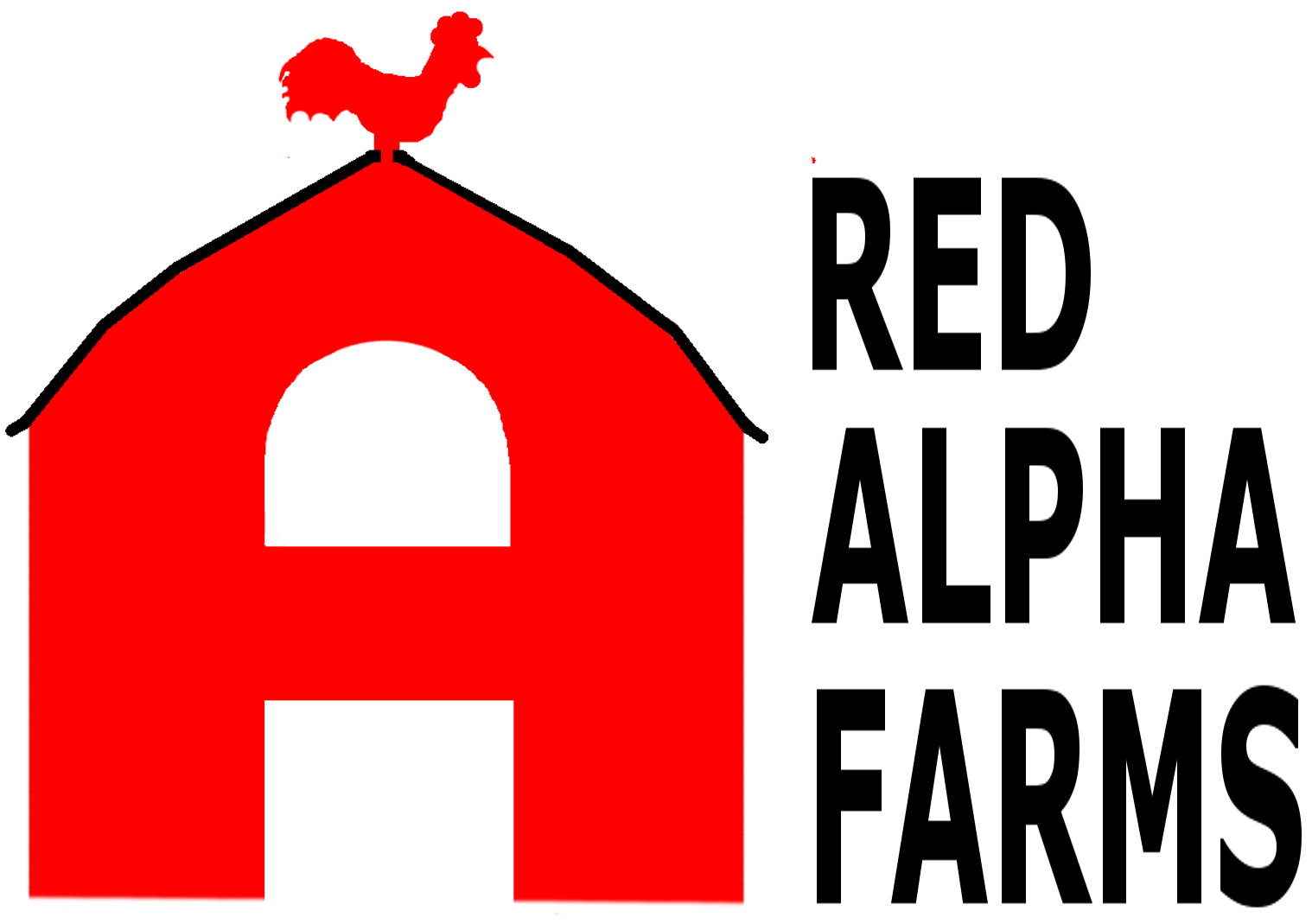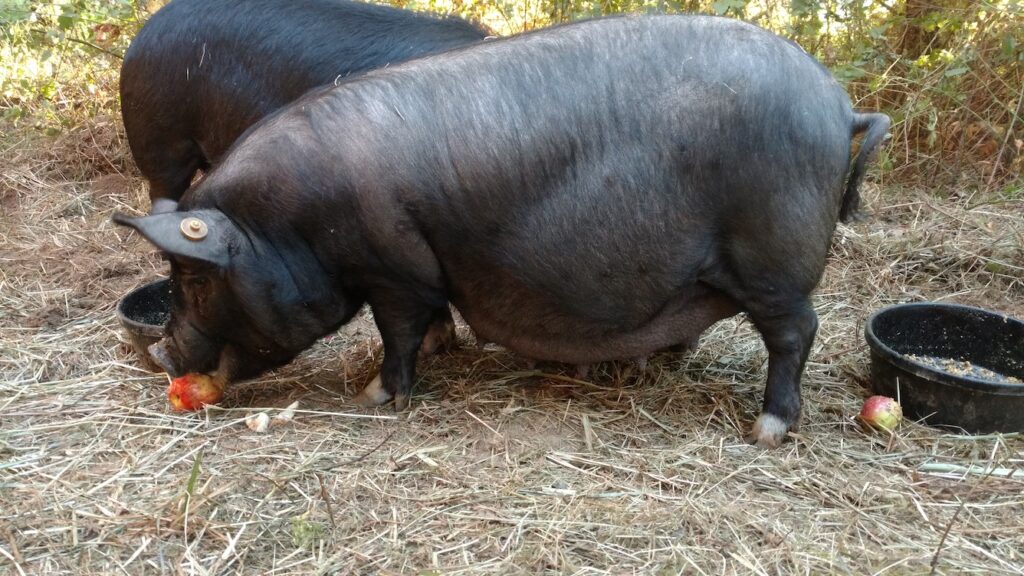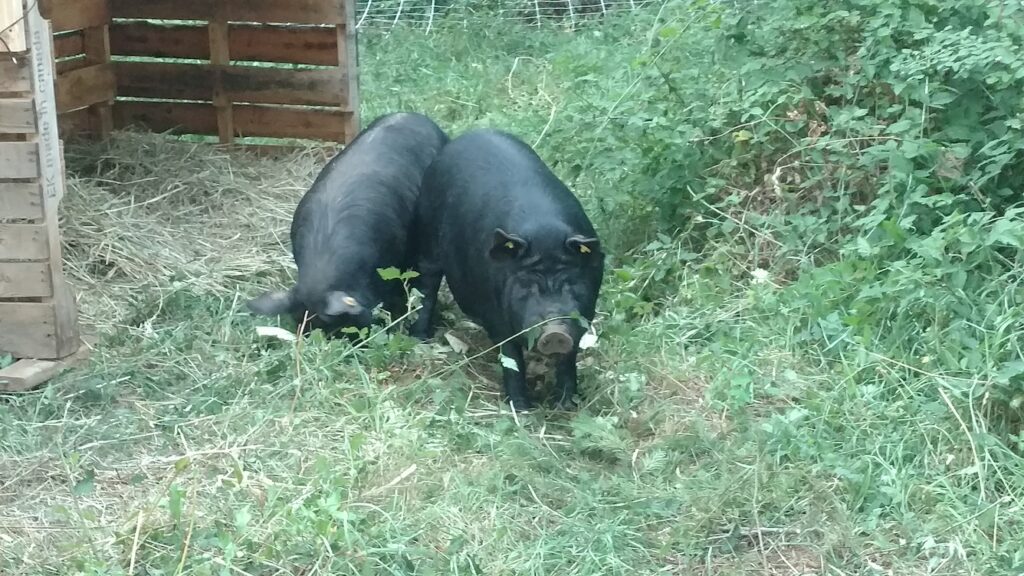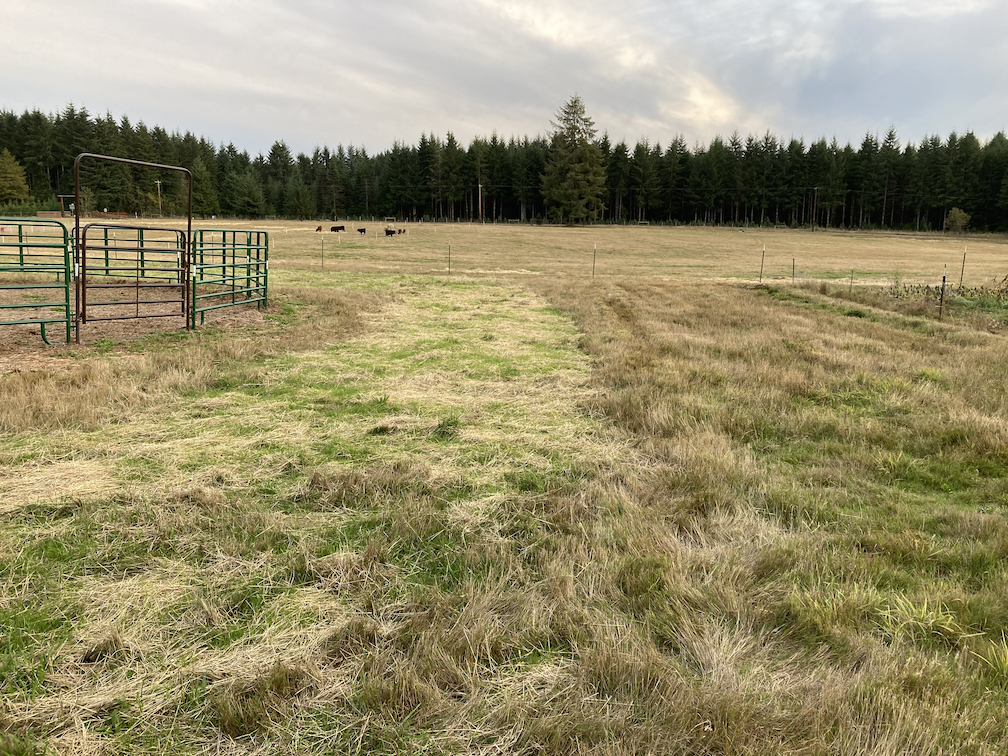American Guinea Hogs are great mothers. If you’re looking for a hog that can farrow on pasture and requires little intervention, this might be the hog for you.
Our piglets showed up on Monday, 9/20/21. We had 6 healthy piglets.
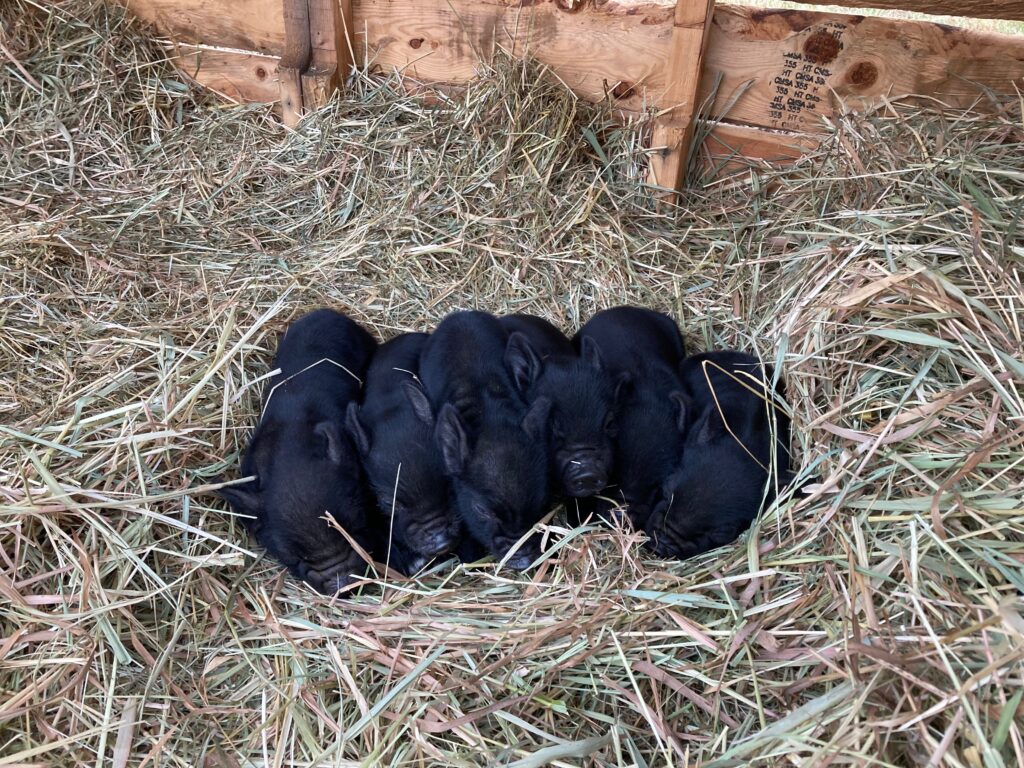
We lost one piglet on the 26th, so we are down to 5. We have 2 gilts (females) and 3 boars (males). We have no idea what happened to the one we lost – it wasn’t there when we went to check on them during lunch that day. It was there for breakfast. I suspect that a pack of crows got it.
Jovy, our sow is doing great. She did lay on one for a minute the first day, but I gently pushed her over and it crawled out and she hasn’t repeated the mistake since. She is very careful every time she enters the shelter to root through the hay to see if there are any piglets there.
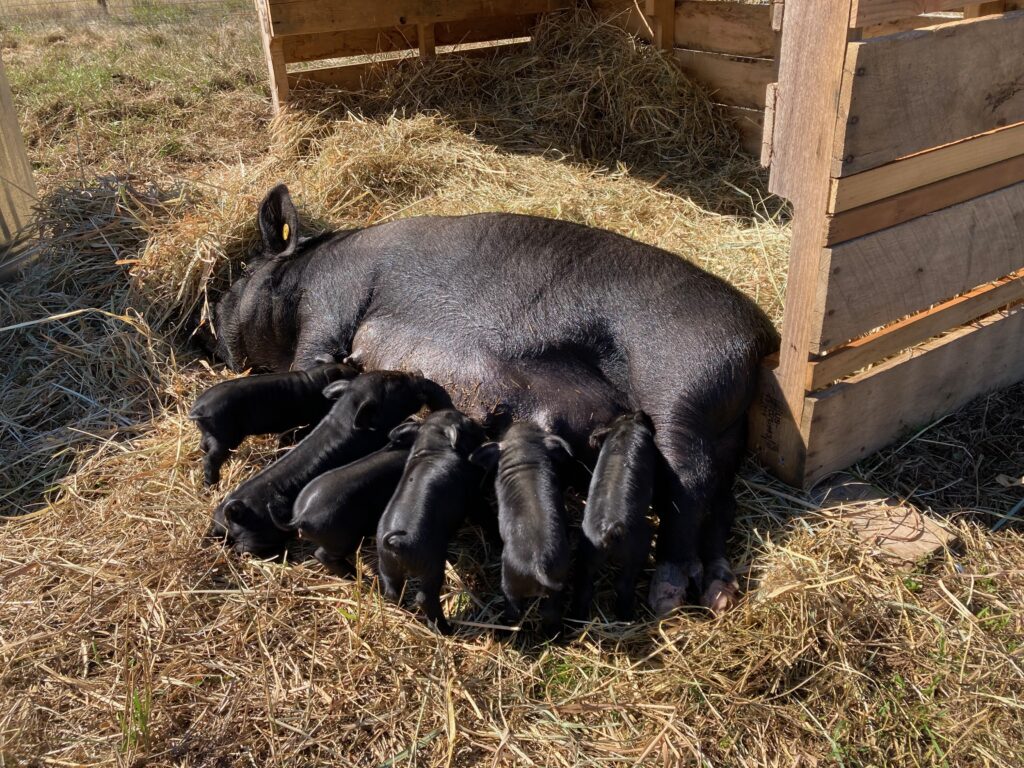
It is surprising how flexible the piglets are when it comes time to eat. They just run behind and when they catch up, they start eating again.
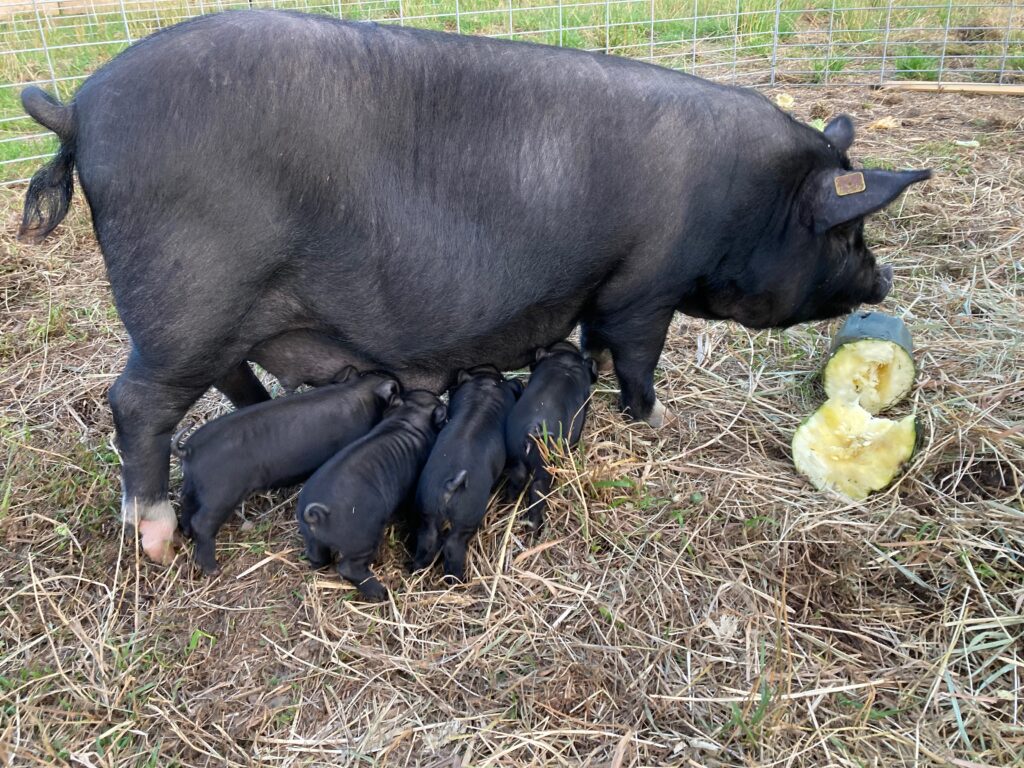
We’ve learned some valuable lessons from our first farrowing – some assumptions might not be accurate, so we’ll have to test them:
- Use a small pen – if it’s large, the piglets can wander off and might get eaten or lay down for a nap. We are using a 16’x16′ pen, with string across the top to prevent crows from flying in (after we lost one). Next time I might go smaller for the first week.
- It might be better to use pellets or wood chips – the piglets can get lost in the hay. Although, it could be that the deep hay protected the one piglet that was laid on and allowed it to breathe.
- Using pallets for the shelter walls required filling in the holes at the bottom (the space between the bottom inside board and the outside boards) so that piglets wouldn’t fall in and get stuck! I had to rescue one before I learned this.
- The sow will possibly become protective within a few hours – if you lift a piglet up and it squeals, she may come running. It’s better to lift them from under them, and not hold them from multiple sides, so they don’t feel like they are being taken by a predator. Our sow became protective, but she would just come running out and grunting angrily – she did not attack anyone.
- It took 2+ hours between the first piglet and the second. From what I have heard, this is very unusual. The rest came within 1 hour from the second.
Overall, this has been a good experience. It’s rough losing a piglet and not knowing why, and not having any evidence or carcass to inspect. I can’t emphasize enough how important good breeding stock is. The process went well partly because we started with great stock, and a great breed. Also, the Registered American Guinea Hog Facebook group is quick to help and offer advice. I’d recommend joining for anyone who would consider or has American Guinea Hogs.
